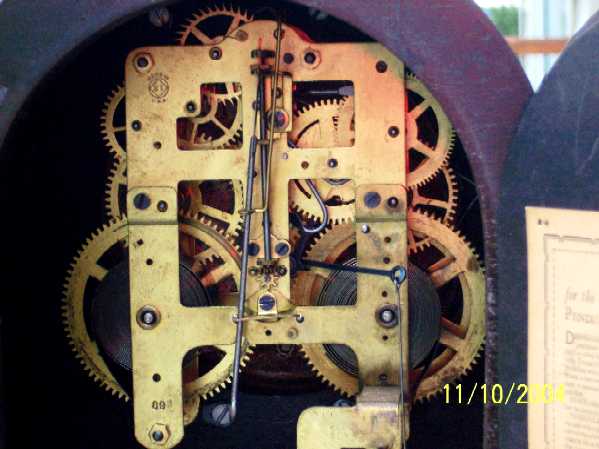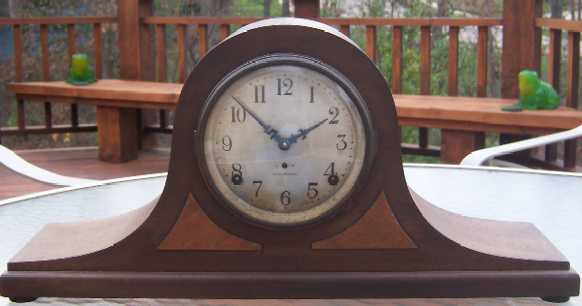
| WWT Shows | CLICK TO: Join and Support Internet Horology Club 185™ | IHC185™ Forums |

|
• Check Out Our... • • TWO Book Offer! • |
Welcome Aboard IHC185™  Internet Horology Club 185
Internet Horology Club 185  IHC185™ Discussion Site Main Page
IHC185™ Discussion Site Main Page  Horological Discussions, Questions and Answers
Horological Discussions, Questions and Answers  Clocks, Including 400-Day Discussions
Clocks, Including 400-Day Discussions  Seth Thomas 89T Movement
Seth Thomas 89T Movement
 Internet Horology Club 185
Internet Horology Club 185  IHC185™ Discussion Site Main Page
IHC185™ Discussion Site Main Page  Horological Discussions, Questions and Answers
Horological Discussions, Questions and Answers  Clocks, Including 400-Day Discussions
Clocks, Including 400-Day Discussions  Seth Thomas 89T Movement
Seth Thomas 89T MovementGo  | New Topic  | Find-Or-Search  | Notify  | Tools  | Reply to Post  |  |
I have a Seth Thomas mantle clock with a 89t movement. This movement allows the springs to be removed for service without complete disassembly. Was this a feature of the "T" suffix or was it started on an earlier version? Joe  | |||
|
This is the clock with the 89t movement.  | ||||
|
Joe, I don't think the "T" refers to that feature. As to when it began, I am not sure. The No.89 movement is mentioned as early as the 1901 catalogue. However in the earlier catalogues there are only front views, and the description offers no mention of the removable springs feature. In the 1928 catalogue, the movement is shown from the back and the removable springs feature is mentioned. It seems to apply to all no.89 movements. Maybe someone has more insight into this. Tom | ||||
|
Tom, I have a 89AM movement in a Sonora chime clock that does not have this feature nor does the 89E that is in a shelf clock in my collection. I also noted that the 89L movement in the clock you sold recently had the feature. Joe | ||||
|
The picture in the Seth Thomas book just shows a "Number 89 Movement", and does not specify it as the "89T". The one pictured, while very similar to yours ( I can find NO differences) has what looks under a magnifying glass to be "89 I". The No.89s that don't have the split backplate may have been produced earlier. The book I have does not have an "89T" listed, so there is no description available. I love puzzles, maybe we can track this one down. The differences between the 89 models described in the book are differences in pendulum length. Tom | ||||
|
| Powered by Social Strata |
| Your request is being processed... |
|
©2002-2025 Internet Horology Club 185™ - Lindell V. Riddle President - All Rights Reserved Worldwide

